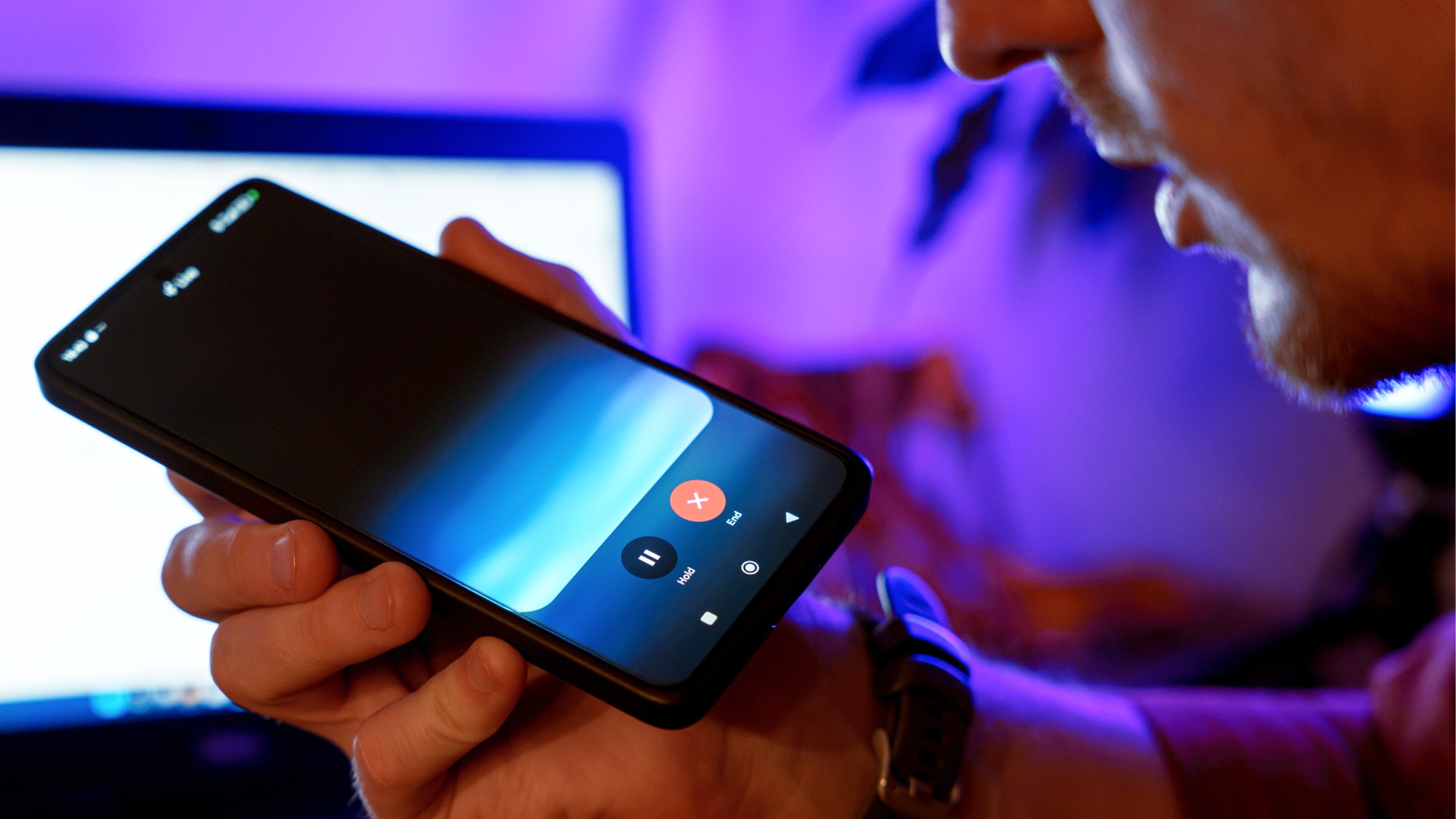iPhone 6 Photos of 12 Amazing Animals
We shot photos and video with Apple's iPhone 6 Plus to see how well it can capture the experience of a typical family trip to the zoo.
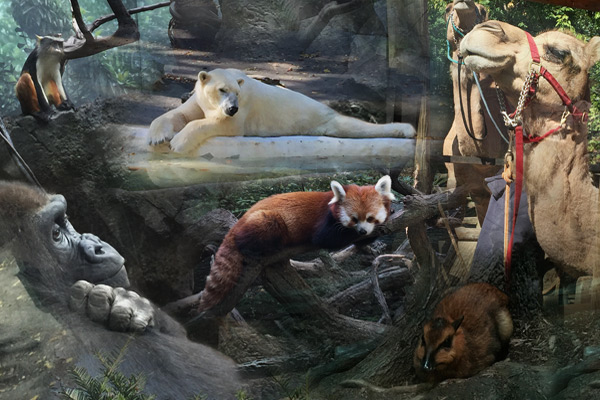
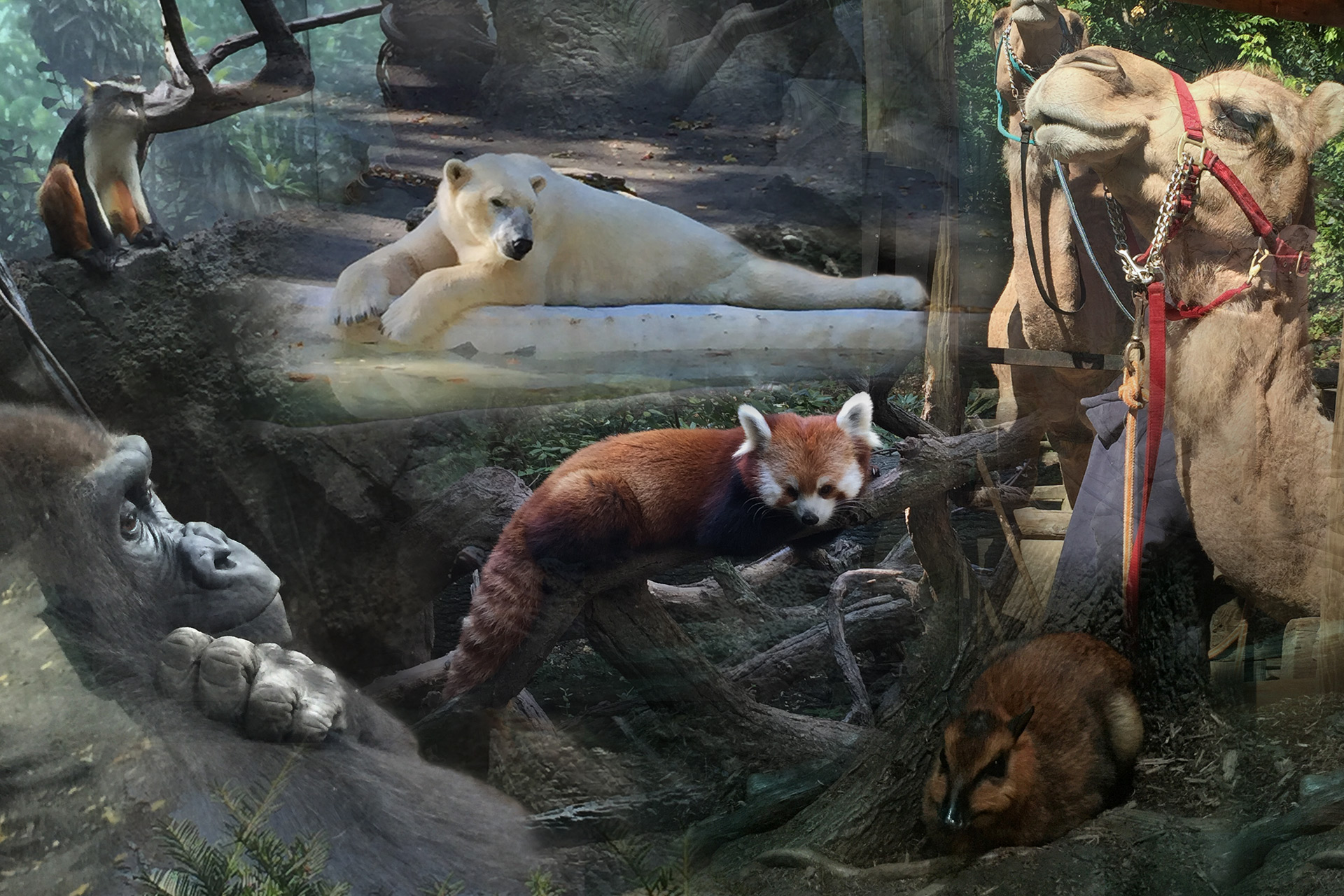
Among Apple's smartphones, the iPhone 6 Plus is undoubtedly the alpha animal, sporting a supersized, full-HD, 5.5-inch display. It also boasts superfast phase-detection autofocus, excellent low-light sensitivity and optical image stabilization, which promises steadier photos. But how well does this phablet perform when shooting the trickiest of subjects — animals — under real-world conditions that you might actually encounter? We took the iPhone 6 Plus on a trip to the Bronx Zoo to find out.
The first thing to keep in mind is that phone cameras see very differently from you. It starts with their wide-angle lenses: When you preview a photo on your screen, everything looks smaller and farther away. The iPhone 6 and other phones have digital zoom, which essentially crops into the photo. But zoom in too far, and the details turn to mush. Getting good photos is a matter of working with your camera's limitations.
MORE: Best Smartphone Camera
We didn't use any extra lenses (like telephoto and fisheye adapters), supplementary lighting or optical filters for this shoot. We also stayed away from third-party apps for enhancing or editing photos and video. The goal was to see how good the camera is on its own. Here are the results. (Please click on the images for larger versions.)
Ebony Langur (Leaf Monkey)
Why you can trust Tom's Guide
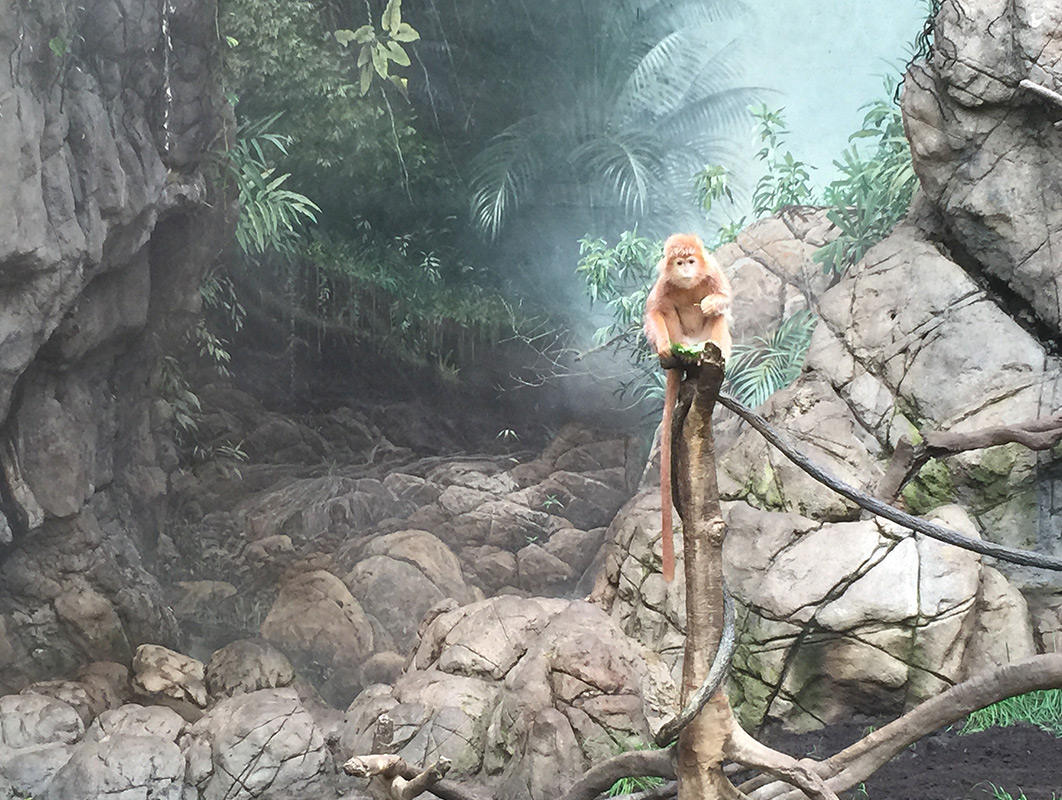
These unusually long-tailed Langurs live on the Indonesian island of Java, in extended families of up to 10 members. But this beautifully designed Bronx Zoo habitat, with active mist generators, looked and felt like a lush "jungle," or at least the convincing movie-set version. The iPhone 6 Plus did a remarkable job conveying not only this cinematic vista, but also the personality of this remarkable monkey, his cinnamon fur complementing his green-and-gray universe.
We wish the native iPhone app let us shoot in a wide, HDTV-style 16:9 aspect ratio. (Third-party camera apps like Camera+ enable this.) And it would have been nice to "stop down" (set smaller) the aperture to buy greater depth of field and more of that mysterious mist. But alas, phone cameras lack adjustable aperture.
Dromedary Camel (One Hump)
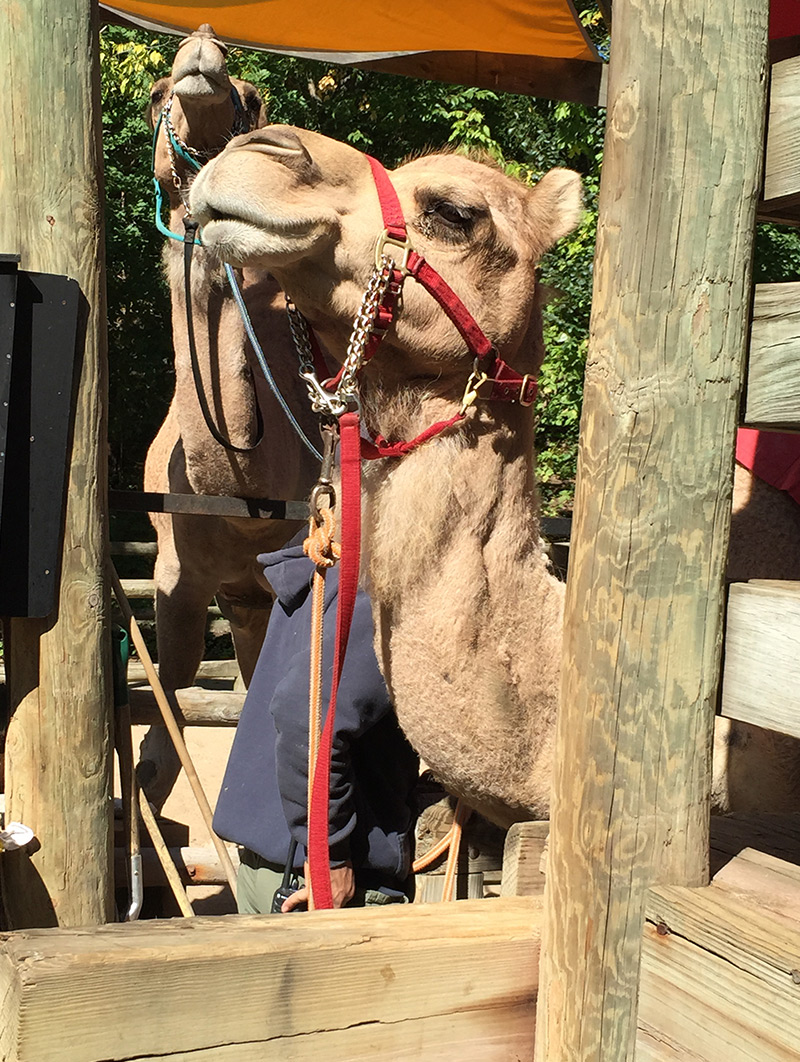
This was one of our zoo shots that a family would most typically take: the kids' camel ride. We loved the strong red color of the strap, the indigo of the handler's hoodie and the generally excellent color saturation throughout the photo. Full, bright sun — rare on the day we shot — gave us plenty of contrast and lots of detail, especially in the fur.
Camels always give the impression of being highly opinionated, and these two Bronx New York humpy ungulates gave us some special 'tude. Note the one in the rear clearly triangulating to launch a projectile of spittle over his partners' nose and onto our iPhone lens. (Fortunately, he didn't.)
Green Tree Python
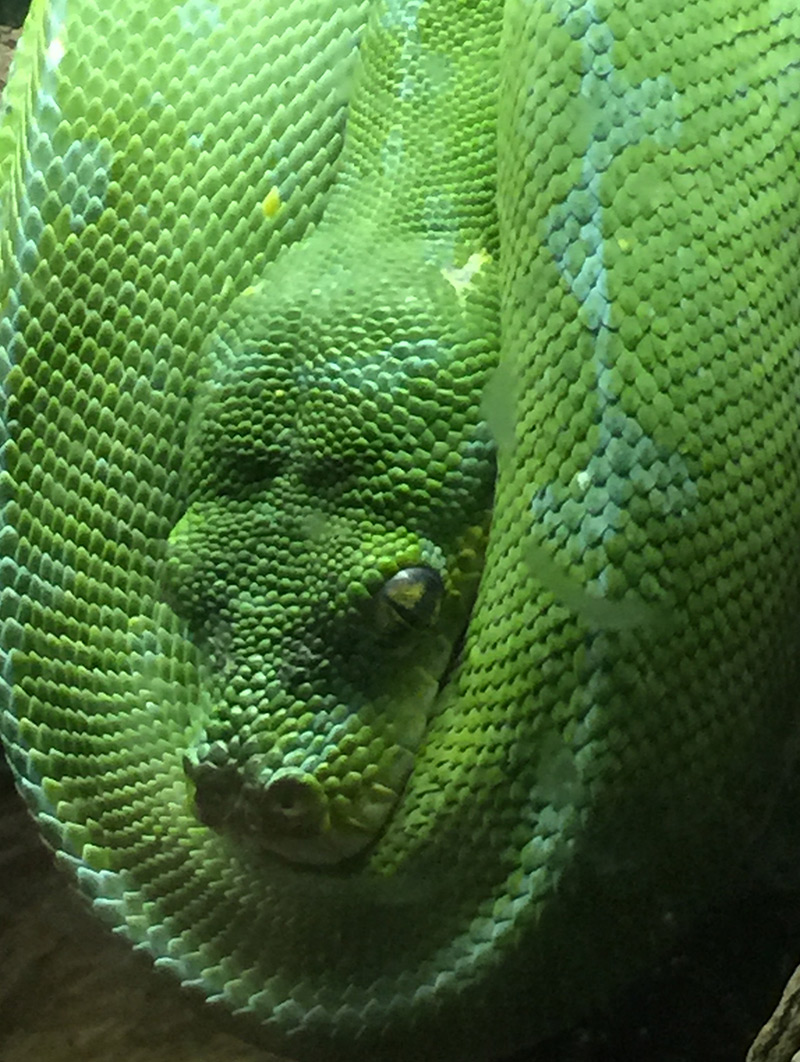
This Green Tree Python is behind glass on which condensation obscures some detail but adds to the mystery of the shot. We went in close and then used just a bit of digital zoom to fill the frame with coiled body loops, accentuating the proud Pythonidae's face in the center.
The iPhone 6 Plus captured a deeper, truer green than other phones we had with us, and it didn't overexpose parts of the python at the top of the frame that were under bright light. It also dialed itself down to a very shallow focus, giving an artfully soft background. There are "jaggies" (digital artifacts) on the snake's scales, but the animal's natural texture generally hides them.
MORE: iPhone 6 Camera Quirks – and How to Fix Them
Western Lowland Gorilla
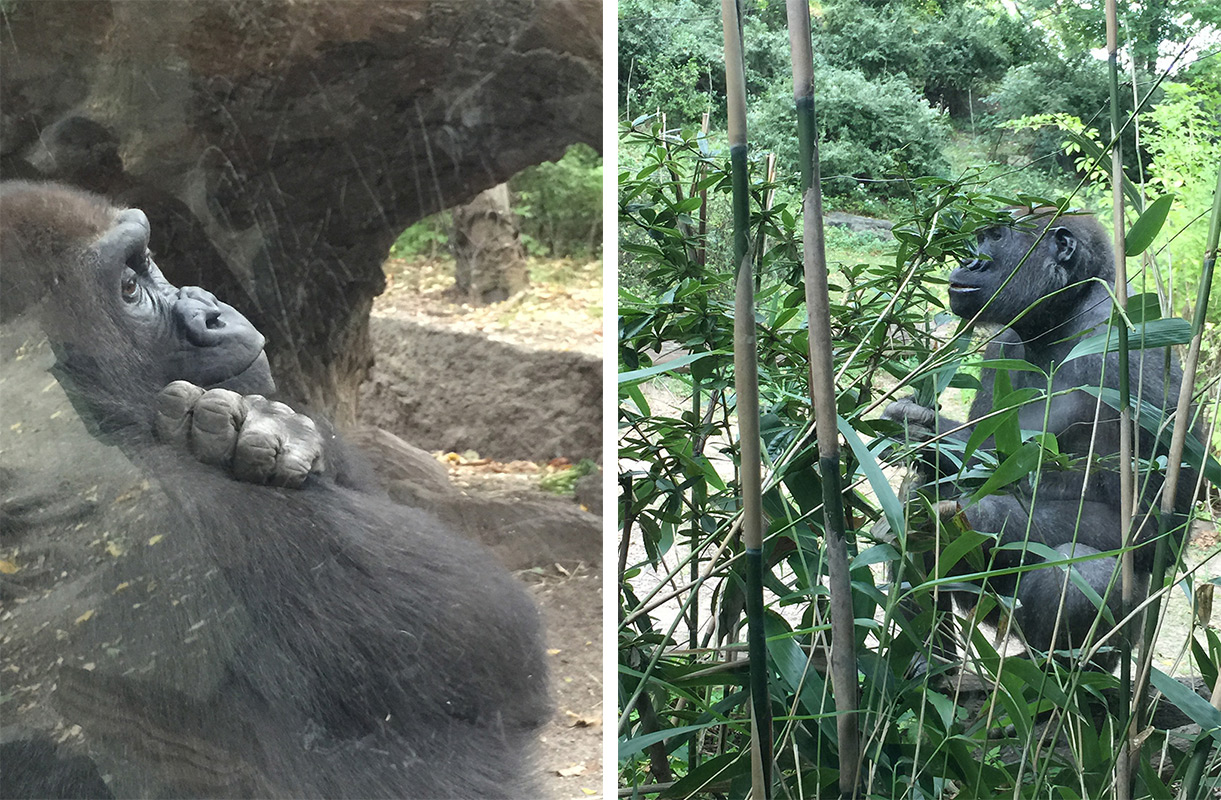
Two contrasting compositions for your consideration. In neither case did the subjects pay us any attention, though they were both keenly aware of us. Even though we were shooting through glare-y glass, the iPhone 6 Plus still grabbed impressively sharp focus on our subjects' faces and hands. Overall, we found the color balance of the iPhone 6 Plus to be very accurate compared to rivals such as the Samsung Galaxy Note 4. Green leaves were generally less saturated, with a hint of yellow, but that's how they appeared in real life. Black and gray gorilla hair didn't take on a steely look, as it did with other cameras that tend to oversaturate blue.
Mouse Deer (Chevrotain)
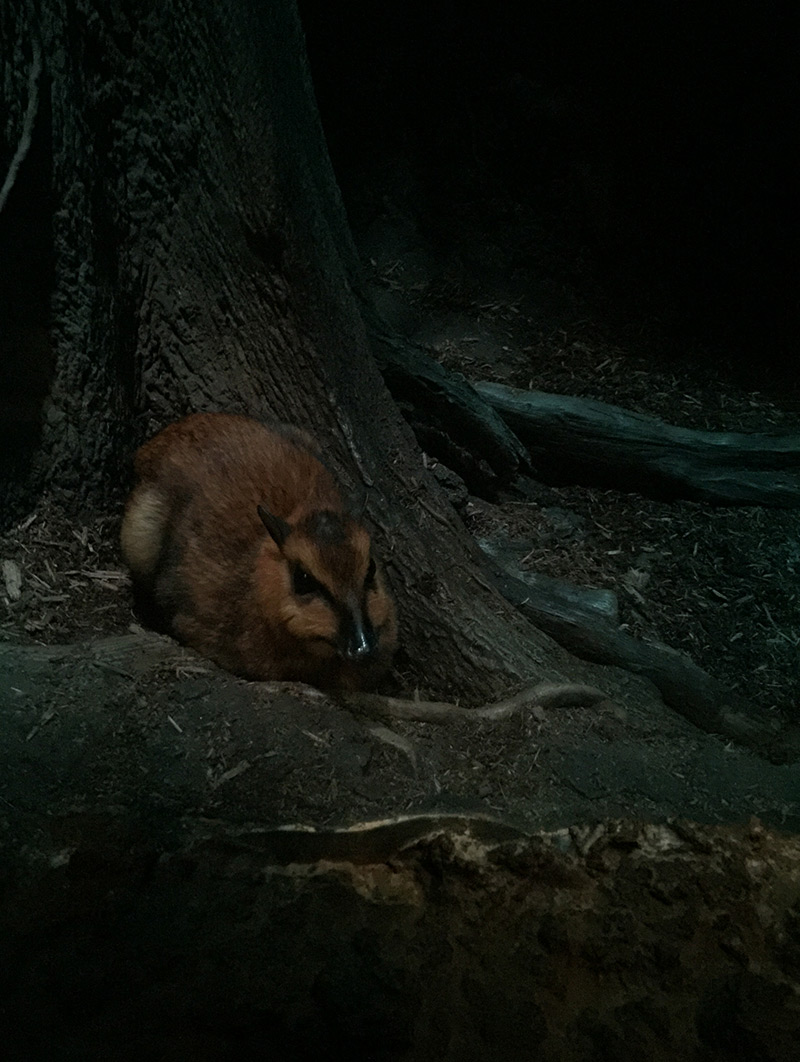
A brilliant attraction of modern zoos is their ability to simulate very dim nocturnal environments. But that's a huge challenge for cellphone photographers. Here, we found pretty close to a worst-case scenario: a dark forest floor with a dark animal up against a dark tree trunk.
Impressively, the iPhone 6 Plus produced an image that is much brighter than we could discern with our eyes. The device's sensor absorbs light well in dim environments, and its optical image stabilization reduces the effects of camera shake from shooting a long exposure. Like other creature portraits we made that day, this image reveals some fake "smoothing" of the Mouse Deer's tawny fur. It's a little soft, but much better than it would have been without image stabilization.
Indian Peafowl (Blue Peacock)
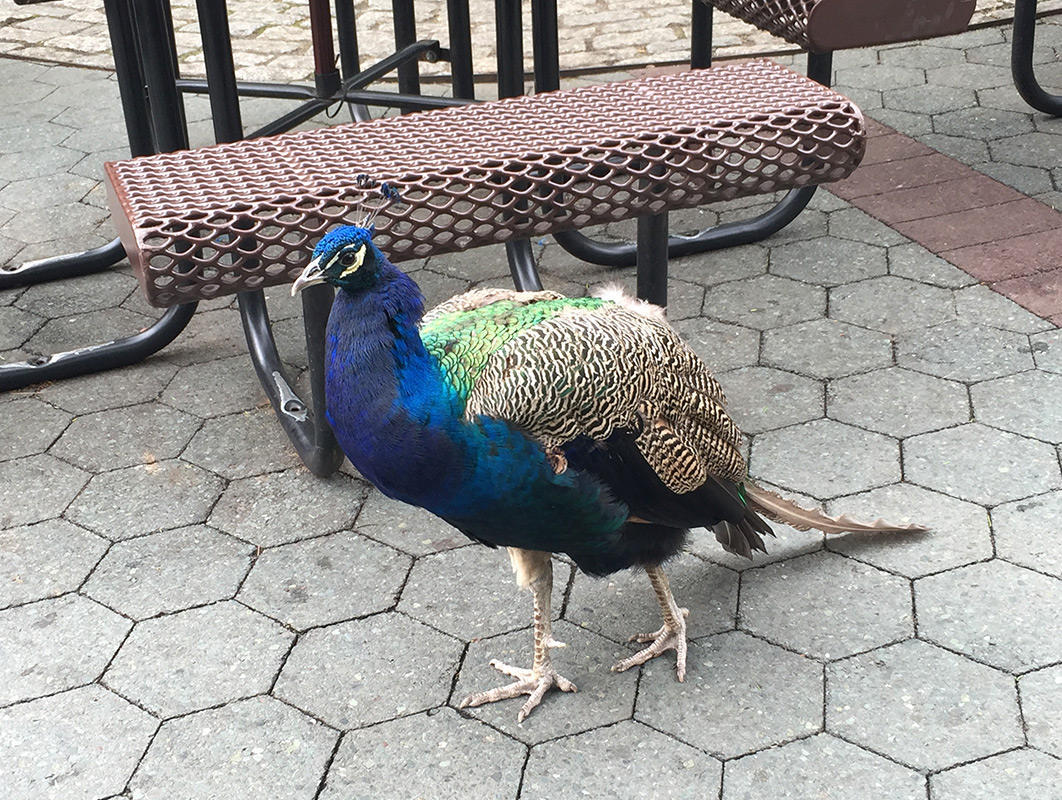
Peafowl, the national bird of India, roam freely around New York's Bronx Zoo. This male (peacock) wandered right up to us for his close-up. A setting consisting of hexagonal pavers, the ovoid and near-hexagonal mesh of the metal bench, and the repetitive simple-polygon patterns of Peacock feathers give this shot a cool fractal feel. The flat, nearly shadowless lighting let us see how nicely the iPhone 6 plus captures a low-contrast, well-balanced exposure.
Polar Bear
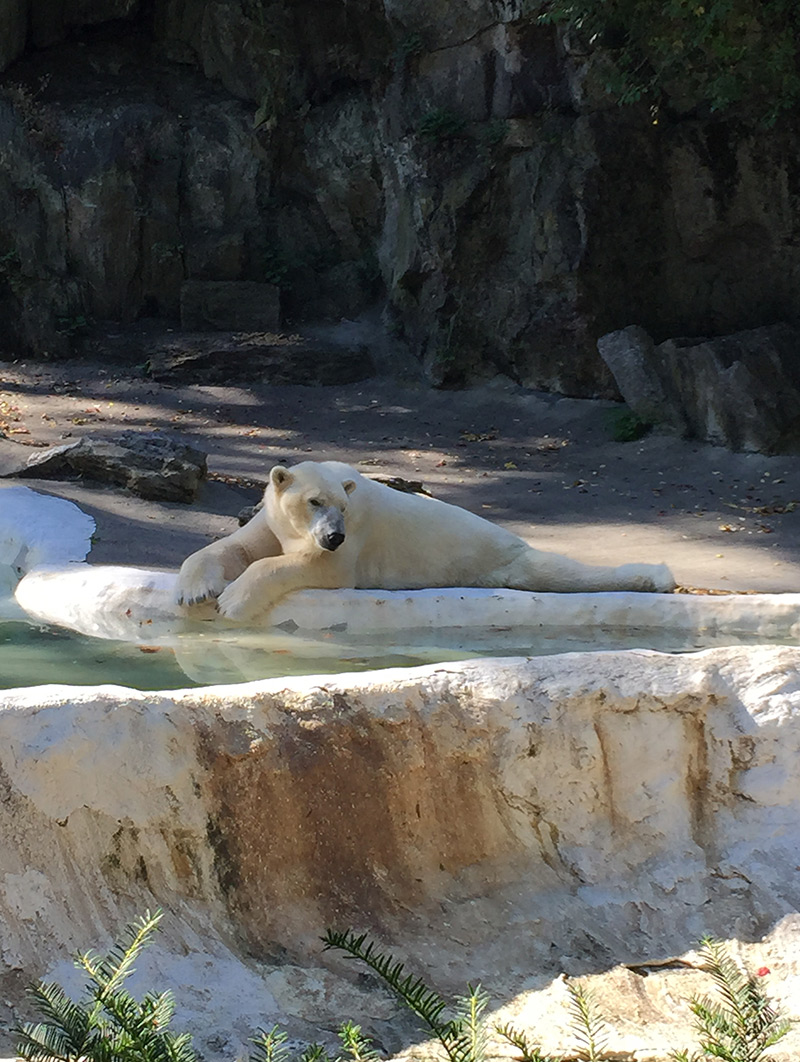
This lounging polar bear, a "must see" in most kids' minds, challenges the iPhone 6 Plus, but also gives it a chance to shine. The shot is pretty, but this zoo habitat is not typical of the polar bear's natural environment of ice and snow.
MORE: iPhone 6 Plus vs. Galaxy Note 4: Phablet Face-Off
With lots of darks and lights in the composition, this image is a good demonstration of the iPhone 6 Plus' solid capability to capture contrast. The camera truthfully captured subtle reflections in the water and the dappled light on the (fake) rocks. The color is a remarkably accurate representation of what we saw. But the iPhone 6 Plus introduced some digital artifacts, most noticeable in the fine details. Look closely at this Polar Bear's luxurious coat, and you will notice some definite false smoothing.
Red Panda
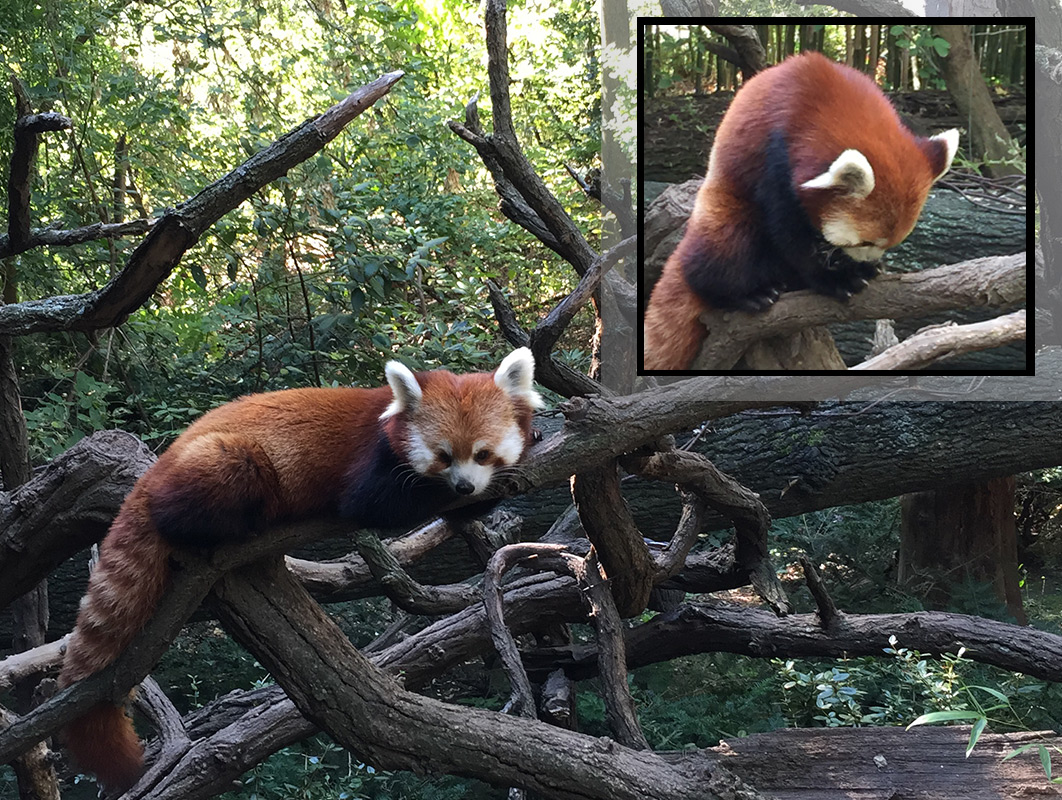
He may look like a fox, but looks can be deceiving. The red panda, also called the red cat-bear or lesser panda, hails from southwestern China and the Himalayan Mountains. Getting a good shot of him in his shadowy zoo setting proved to be a challenge, in part because the iPhone 6 Plus, like nearly all phone cameras, lacks an optical zoom lens. While the photo looks good at full size, a close-up using the iPhone 6 Plus' digital zoom imparted a coarse texture and matted look to the red panda's fur (see inset). What you're seeing is not motion blur. Our red panda was not moving quickly, but he looks unpleasantly fuzzy, anyway.
Silver Leaf Monkey (Silvery Lutung) Video
A tribe of languid silver leaf langurs, in lush surroundings, composes a pastoral, timeless scene. Mist and the cloud-filtered light filling the enclosure create a low-contrast look. If not for green plants, the shot would be almost monochrome. Like other flagship smartphones, the iPhone 6 Plus can "overcrank" video capture at 120 and even 240 frames per second. Played back at normal speed, this makes for revealing slo-mo action shots.
MORE: How to Shoot Slow-Motion Videos with the iPhone 6 and iPhone 6 Plus
In the above 120 fps video, watch our Leaf Monkey friend sliding down the vine and interacting with the baby. Below, observe the falling water and curling mist in our example to judge the smoothness for yourself.
Père David's Deer
With wildlife, even in a zoo setting, action shots are usually hit or miss. These playful Asian deer challenged our iPhone 6 Plus by running from the distance to a nearby location, and from the light of the full sun to deep shadow cover under trees. Named for the priest who helped save them, the Père David's deer now survive only in protected settings like this spacious woodland at the Bronx Zoo.
The iPhone 6 Plus digital image stabilization worked well as we panned the camera to track these running deer. As with still images, the iPhone 6 Plus returned a notably wide contrast range, capturing the partially shadowed areas without blowing out the whites under direct sunlight. You can see the color balance shift cooler (more blue) at 11 seconds) as the iPhone 6 Plus hunts for a new exposure. Concentric water waves rippling out from the playing deer are fluid, not "step-y" as we've seen on other phone cams.
Wolf's Mona Monkey (Guenon)
These colorful, compact fruit-eaters roam the wetlands and moist forests of Uganda and the Republic of Congo in central Africa. Unlike many species in the Bronx Zoo, Wolf's mona monkeys, also known asWolf's guenons, are not a threatened species.
Despite the challenges of this setting, such as bluish ambient lighting and an angled, glass half-wall in the foreground that reflects portions of the habitat, the iPhone 6 Plus faithfully reproduced the warm orange-and-cream fur tones of the proud piebald wolf's mona monkey. However, our video yielded some motion blur as we tracked these nimble monkeys. You can see this if you pause the video on any frame.
The Best So Far
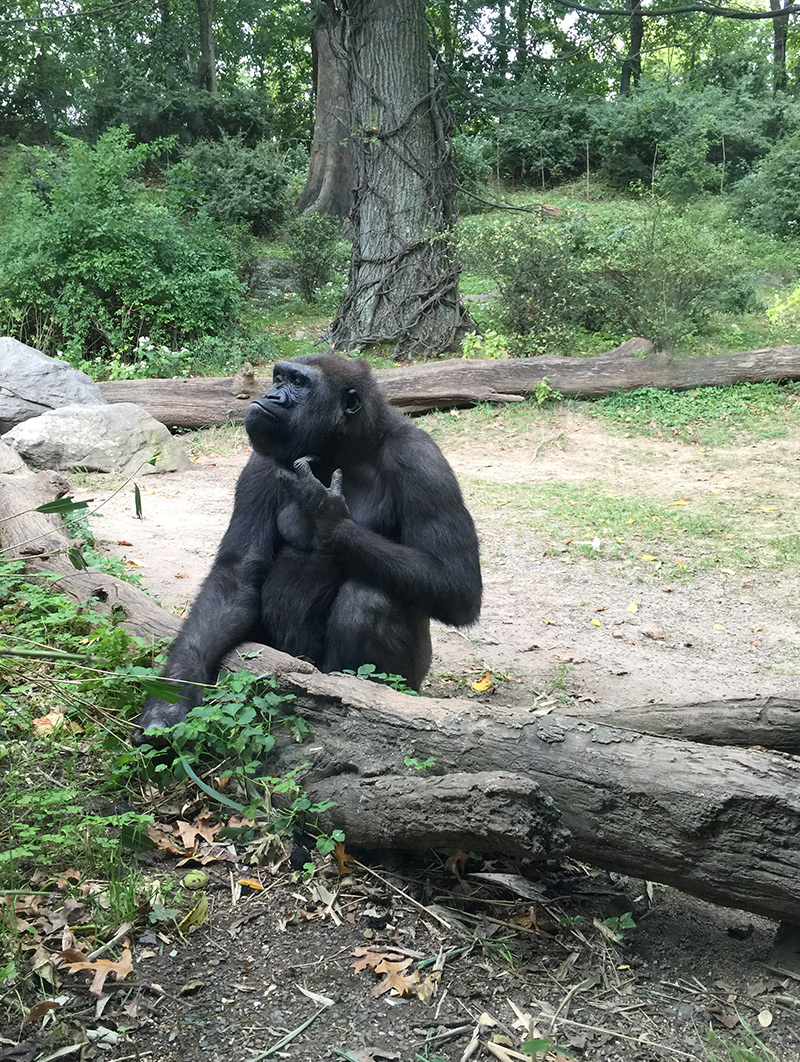
We're not at the point of recommending a phone camera for shooting the next Animal Planet feature or nature documentary. But the iPhone 6 Plus marks a small step closer to that goal thanks to its ultra-fast autofocus, superb low-light performance and optical image stabilization. With its generally accurate color reproduction and slo-mo video, we think this is the best phone (for now) for capturing the lives of species with whom humans share the world.
Though we made most of these shots from behind fences, barriers and partitions, the images take us beyond human affairs, offering a reminder that people share the planet with a rich (and threatened) panoply of wondrous creations.
Follow writer and executive producer of visual content Dave Brody @DavidSkyBrody. Follow senior photographer Jeremy Lips @JeremyLipsPhoto. Follow us @tomsguide, on Facebook and on Google+.
Sign up to get the BEST of Tom's Guide direct to your inbox.
Get instant access to breaking news, the hottest reviews, great deals and helpful tips.
Tom's Guide upgrades your life by helping you decide what products to buy, finding the best deals and showing you how to get the most out of them and solving problems as they arise. Tom's Guide is here to help you accomplish your goals, find great products without the hassle, get the best deals, discover things others don’t want you to know and save time when problems arise. Visit the About Tom's Guide page for more information and to find out how we test products.

